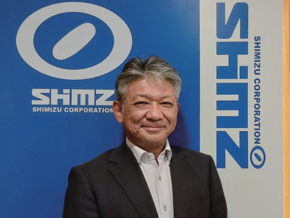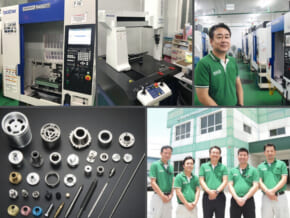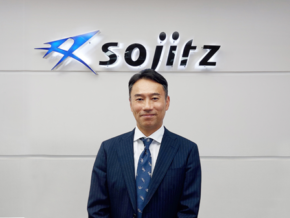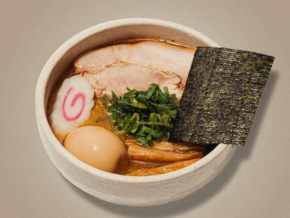Business Talk with Yutaro Kuryu, Senior Development Officer of Mitsubishi Corporation
Born in Los Angeles in 1983, Yutaro Kuryu is a graduate of Tokyo University of Science in Japan. He joined East Japan Railway Company (JR East), where he was first assigned to the non-railway division and was involved with the development of railway sides. Since 2016, he has been seconded to Mitsubishi Corporation, and in October of the same year, he came to the Philippines as a senior development officer, in charge of overseas real estate development.
In recent years in the Philippines, Japan-themed commercial areas in shopping malls are gaining more and more attention. With his ample experience from JR East, he works hard to be the means of connecting Japan and the world through real estate development.
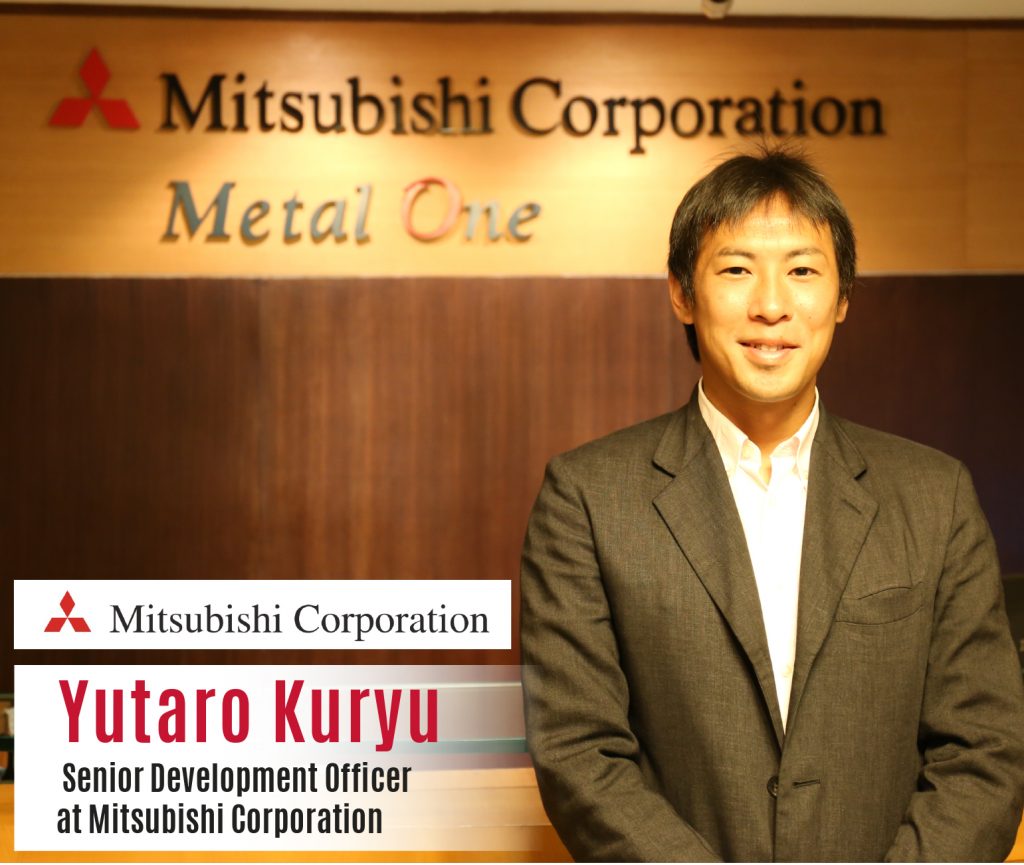
Tell us about your history.
I was born in Los Angeles in 1983 and lived there for three years due to my father’s work. After that, I moved to Kawasaki City in Kanagawa Prefecture. I went to Kosei Gakuen High School and then graduated from Tokyo University of Science.
Why did you choose your university?
During my time in high school, I spent most of my time on soccer and swimming—so, I failed the university entrance exam. I had to study for a year and try again. At that time, I took interest in physics so I began forming an idea that I would like to be a physicist. My hard work paid off; I passed the entrance exam of my first-choice university, but alas! I got disqualified in the admission because my parents were not able to do it properly. I heard this news in the middle of March, and at that time, most universities had closed the acceptance of new students. But one university was still accepting new students, so that was it. I did not want to study physics other than in Tokyo Institute of Technology, regretting what had happened. So, I decided to take up something totally different in another university—economics.
How did you feel about that?
“Oh, I will never be a physicist. What am I to do?” But what’s done is done, no point in regretting, so I decided to choose a different career path and do my best in that field. Looking back, I feel this was a major turning point for me.
You joined JR East in 2006.
At that time, JR East was a leading developer of shopping malls within train stations. This interested me, so I applied for a job. While most job applicants wanted to do station mall development, my motive for applying the job was to do real estate development around stations. After I joined them, I was assigned to the real estate division as I had wished.
In that division, what did you do?
For the first six months, I looked after the land that was owned by JR East. My boss at that time had a habit of saying “the management is the basis of development.” So, I happily accepted the site management job before I moved on to real estate development. It is not well-known that JR East is a prominent landowner in Japan; they own 18,000 hectares of land. This is 180 times more than Tokyo Disneyland and Tokyo Disney Sea put together.
The main work in site management is patrolling and checking sites on foot, so I walked nearly 10 km. a day. My patrolling area was Tokyo; I visited all Tokyo railway areas. Patrolling was done by a pair, and partners changed depending on the patrolling route. I was the only new recruit because most people who did this job were retired or part-time workers. Pairs were together all day, so naturally, they talked together. They talked about National Railway times or the history of the company. Well-experienced people talked to me one-on-one, teaching me manners and attitude towards work—it was very useful. Looking back, my foundation might have been formed this time. Site management sounds boring, but getting there on foot, seeing things with my eyes—I think I learnt a lot from this.
What did you do after that?
I was assigned to deal with the development of spaces under elevated railway tracks, the job that I originally wanted to do. The railway shops that I dealt with still exist today, and when I pass by these shops, I become emotional remembering the hard times.
From 2008 to 2013, I was a project member of the development project of spaces underneath railways between Okachimachi and Akihabara. When this began, I was at the bottom, but before I knew it, I was the project manager. At this time, I had another job to deal with, which was to open a new line called the Ueno-Tokyo Line. I sought local residents’ cooperation, carrying out land acquisition.
Seeking cooperation sounds good, but in reality, it meant discussing the ownership of their land. It was my third year with JR East, young as I was, it was a hard job. I still clearly remember someone telling me, “You are under the umbrella of a big company!” I was negotiating with people who lived there for a long time, some had a small business there, some were old, but everyone was working hard to make a living. Then, suddenly a young man from a big company appeared, asking them to let the company use their land and other things. Oh, they must have been angry! During the negotiation, some cried; I even had coffee splashed at me. As I gained more experience, I felt more keenly that this negotiation would change people’s lives! I tried to see things through their eyes, tried to comply with their wishes. The most important thing was to build a trusting relationship with them.
After that, I moved to the main office. I headed the operation strategy for real estate that was owned by JR East.
What project did you do?
Opening Hokuriku Shinkansen was the biggest subject at that time. In the headquarters, the project size was bigger, so I had to talk to site managers rather than plan on my own. I was a frequent visitor to the actual sites. Though I was a white-collar worker, I still joined surveying work that took place during the night, and I walked 50 km. of the new part of Hokuriku Shinkansen to confirm boundaries. I was also in charge of re-developing Shinjuku Station New South Exit (where you can find the Shinjuku Expressway Bus Terminal) and Chiba Station.
You were involved with the re-development of stations.
My original motive to join JR East was real estate development around stations. Just before I came to the Philippines, I was involved with the New Shinagawa Station project—I wanted to do this job even before I joined JR East, so my dream came true! The redevelopment area is between Shinagawa and Tamachi, a part of the Yamanote line, the heart of Tokyo’s train network. The new station will open in 2024 (opening provisionally in 2020), so I was sorting out some land for the re-development and the urban planning application. Originally, there was a train yard, and we are going to use that land. I think I can safely say that this is the last biggest development in Tokyo.
After that, you are seconded to Mitsubishi Corporation.
By collaborating with Mitsubishi Corp., we were hoping to launch a new business either in Japan or overseas. For this purpose, I was seconded to Mitsubishi Corp. in 2016. For the first three months, I was in the headquarters of Mitsubishi, learning about the company.
I came to the Philippines in October. Now I am in charge of the real estate business. The Japan-themed commercial area, “Japan Town” is one of my projects.
What have you accomplished so far?
First, I established relationships with business partners. Ayala Corporation is the partner for “Japan Town,” and with their request, I have been the project manager of Japan Town since January 2017.
How did the “Japan Town” project start?
In the Philippines, many shopping malls are built one after another, and they lost their originality—a cookie-cutter situation is here! The Ayala group wants to differentiate themselves from other shopping malls and, to do so, they want to make a Japan-themed commercial area, so they contacted Mitsubishi Corp. There are many things in Japan that are still unknown to the Philippines. By collaborating with Mitsubishi Corp., Ayala wants them to be brought into the Philippines.
What is the concept of Japan Town?
“Real Japan.” Japan Town itself is not unusual, but usually, business concepts are based on old Japan, such as the Edo era, local street stalls, or paper lanterns—this is far from current Japan. We differentiate ourselves by showing exactly what Japan is now.
You want to re-create the current Japanese culture?
That’s right. Not the old Japanese culture. We want to show what’s happening in Japan now.
With regard to opening shops, what is the plan?
Currently, our plan is that the Japan-themed commercial area in Ayala malls will be carried out with Mitsubishi Corp. So, first, we will make a model shop in Glorietta, Makati. Then, this shop will be copied to new malls that are currently under planning. “Japan Town” in Glorietta will open in February 2019. I would like this to be the place where Filipinos enjoy real Japan.
How do you like Filipinos?
My friends here are mostly Filipinos, and they are always jolly. Sometimes I get invited to their houses. From kids to elders, they are all happy.
Economically, the Philippines is not so rich, yet people are very cheerful. I would like to make use of what I learned in the Philippines when I go back to Japan.
What is your future goal?
I would like to let the world know more about Japanese culture. I would like to do a job that involves that.
How do you spend your weekends?
I often go to shopping malls with my children. Sometimes, I enjoy fiesta with my Filipino friends.
What quote/phrase do you live by?
Where there is a will, there is a way. When not sure, just do it.
Tell us about your future plan.
When I am in Japan, sometimes I feel people are becoming narrow-minded and have no room to be nice to each other—criticizing a celebrity’s infidelity harshly or killing someone just because someone bumped into the person, etc. I hear these things in the news.
Which book has inspired you most?
Erin Meyer’s “The Culture Map: Breaking through the Invisible Boundaries of Global Business.” This book teaches the importance of understanding different cultures. For example, in America, when one’s performance is reviewed, positive things are told directly, and negative things are only hinted. But, in France, it is the opposite: they hint positive things and emphasize negative things. So, when an American boss evaluates French workers’ performance, they feel they are praised. This book made me think a lot because now, I work with Filipinos whose culture is different from mine. I think it is a good book for those who work abroad.
This first appeared in Philippine Primer English Magazine’s January 2019 issue.





